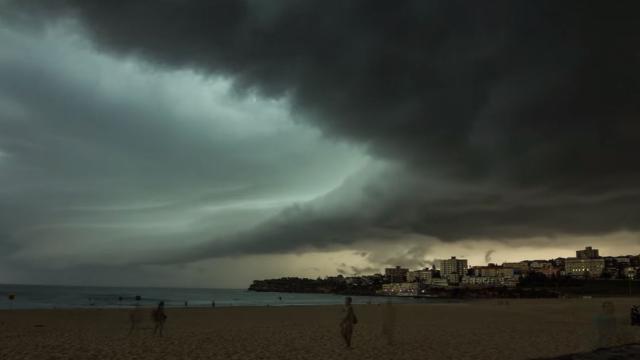The endless drought is over in Australia and now we’re heading into the summer storm season. Thunderstorms have battered parts of Victoria, New South Wales, the ACT and Queensland recently bringing torrential rains, giant hailstones and flash flooding to the east coast.
The summer months are prime for storm activity. As temperatures rise it’s often a blessing when a storm comes through to cool things down after a hot day. But they can also be super dangerous, particularly in far north Queensland where storms often become cyclones in summer. And that’s without mentioning the La Niña activity that’s set to hit Australia.
There’s no telling when a big storm could roll through, so here are a few things you can do to prepare for the inevitable.
Be Prepared Well in Advance
The NSW SES suggests that you maintain your yard and balcony by keeping it clear of loose items. You should also get ahead of things and clear out your gutters and drains to prevent blockages and reduce the risk of leaks. While you’re at it, make sure any trees or branches surrounding your house are maintained.
It’s also a good idea to make sure your insurance policy covers storm-associated events and check to see if you’re living in a flood-prone area. During the 2011 floods in Queensland, many home owners had their insurance claims rejected due to the terminology around the type of flood event it was, which wasn’t covered in certain insurance policies.
Prepare for the worst by having an emergency kit handy in your house. Stock it with things like spare torches and batteries, first aid supplies, important documents with contact details, and extra bottled water and food in case you need to evacuate your home.
If you know you that a flood is coming it’s also a good idea to get as many items as far off the ground as possible, either by moving them to upper levels of your home or onto benches and tables. If you live in a flood zone it’s also a good idea to have some sandbags lying around, just in case.
Before the Storm
The easiest thing you can do to find out if a storm is on the way is to keep an eye on the Bureau of Meteorology website or download the app. The BOM will issue detailed alerts on storm activity and when each storm cell is expected to break, so it’s a good idea to check the website for details and updates are made regularly. Apple Weather even includes BOM warnings in its forecasts now, so you can easily check for warnings on your phone at a glance.
If a storm warning is active, the BOM suggests that you shelter your pets and animals, store any loose items in your yard, park vehicles under shelter and away from trees and secure external windows and doors. It’s also good advice to close your windows before you go out for the day so that you don’t come home to an indoor puddle.
During the Storm
When a storm hits the best place you can be is inside. If you’re driving, try and find somewhere to park that is undercover until the storm passes or think about delaying your travel plans. If you’re stuck outdoors, to avoid becoming a human lightning beacon, it’s best if you take shelter under a roof or building and not in an open space. And if you’re caught out on the water, head to shore immediately.
Prepare for potential power outages with spare torches and candles and make sure you save whatever work you’re doing on your computer in case of an internet dropout. In the case of a long blackout, it’s also a good idea to switch everything off at the wall in case you’re not home when the power comes back on.
You can definitely still use your electronics during a storm but if you still use a hardwired telephone it’s not a good idea to use that. And make sure that your appliances are plugged in to surge protectors.
After the Storm
It should go without saying but never pick up any fallen power lines — report them to an energy supplier such as Ausgrid on 131 388, Endeavour Energy on 131 003 or Essential Energy on 132 080, or call emergency services on triple zero.
And please, PLEASE, don’t drive or swim through floodwaters. They do say ‘if it’s flooded, forget it’ for a reason.
The BOM and your local SES also have more detailed guides on what to do during flood and cyclone warnings. Remember, catching awesome pictures of a storm is great, getting caught in one is not.

Leave a Reply
You must be logged in to post a comment.